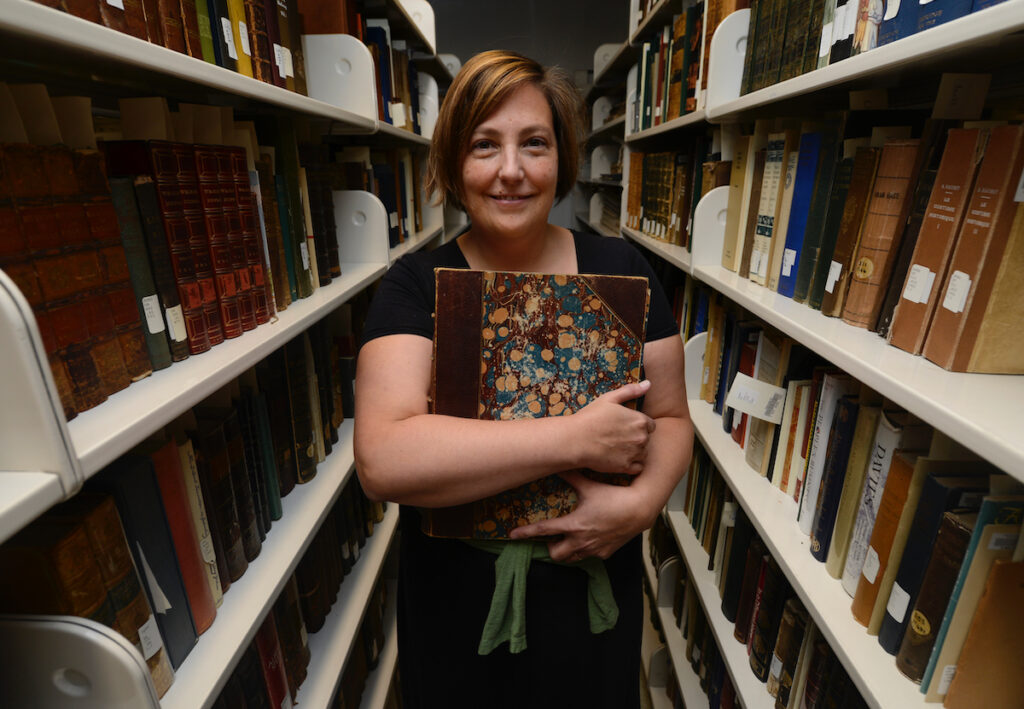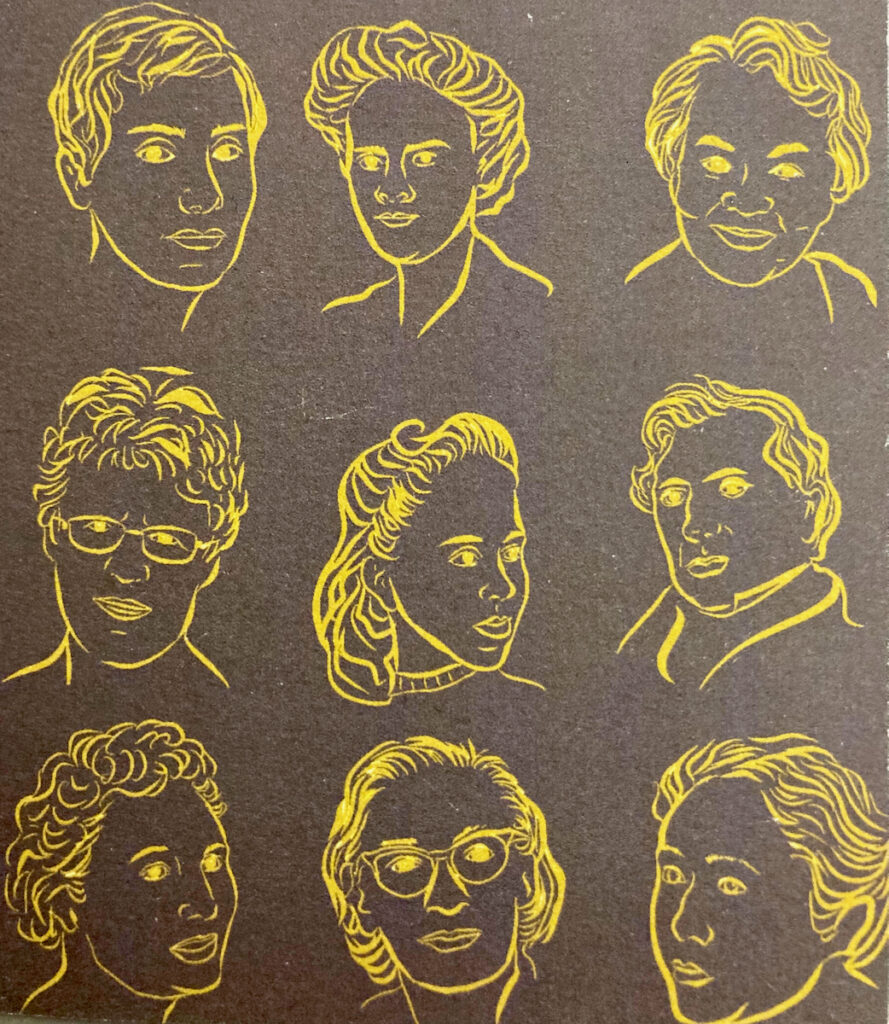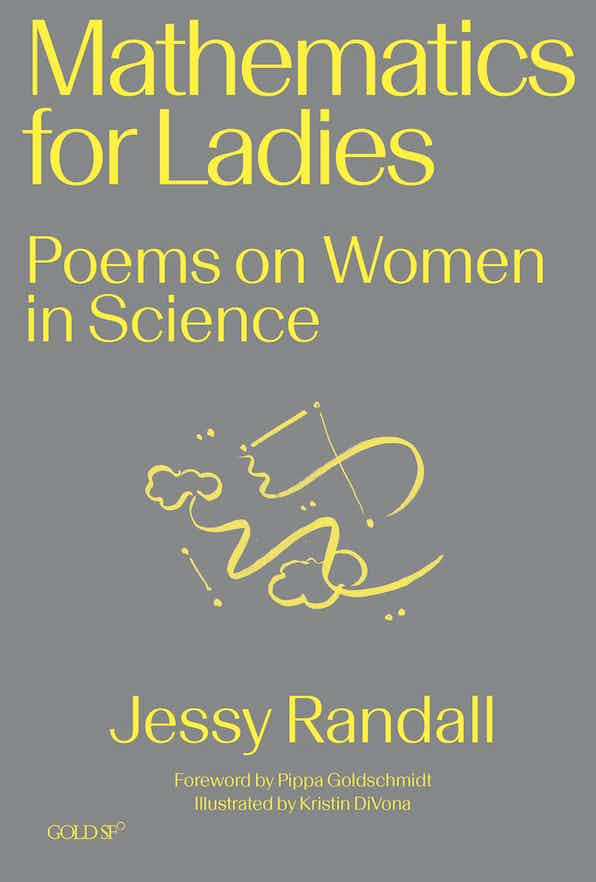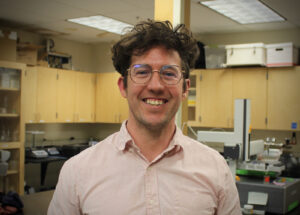
In her new collection of poetry, “Mathematics for Ladies: Poems on Women in Science,” Jessy Randall offers up miniature biographies and insights into the lives and accomplishments of women in STEM who history has both remembered (Marie Curie, Jane Goodall) and forgotten (Maria Gaetana, Chien-Shiung Wu). Her latest book, which follows recently published collections of diagram poems, is illustrated with line drawings by NASA artist Kristin DiVona from NASA’s “Reach Across the Stars“ project.
Randall is the Archivist and Curator of Special Collections at Colorado College and her poetry has been published extensively, including in Analog, Asimov’s and Scientific American. I recently interviewed her via email. (Full disclosure: I have known Jessy Randall for many years as a friend and colleague).
Q: What is your background in science or math?
Randall: I studied only the bare minimum of science when I was in college. I took a class at Columbia University called something like “Readings in Science” – it was one of the few science classes that didn’t require a lab, and was one third biology, one third math, and one third physics. We read scientific papers and discussed them as one would in English class, which was exactly my kind of science at the time. I admire scientists; I read about them; I am enthralled by what they do – but science is not a big part of my regular everyday life. Or, it wasn’t until I began work on the project that became the book!
Q: Who was the first woman scientist/mathematician that made you think poetry might be a way to illustrate these women?
Randall: I’ve been reading and writing about Elizabeth Blackwell, the first known woman to get a medical degree, since I was in elementary school. (I say “known” because in my research for Mathematics for Ladies I learned about James Miranda Barry, an earlier doctor who was assigned female at birth.) Her life and work would make a great opera, musical, stage play, novel, film … but I don’t write those things, so I put her in poems.
Q: How did the illustrator get involved in the book?
Randall: I chased her down! Kristin DiVona’s illustrations for the app “Reach Across the Stars” seemed absolutely perfect for my project. When I contacted her through her website, she told me that because the illustrations were made for NASA, they were available to anyone to use without a fee. So that was fantastic news. I then commissioned a few additional illustrations specifically for the book.

Q: The Hitchcock Project is for “visualizing science.” How do you think poetry can help us visualize science (and scientists) in ways that other media or genres might not?
Randall: One of the texts I read in my college science class was C.P. Snow’s “The Two Cultures,” which argues that the world would benefit if practitioners could bridge the supposed chasm between “science” and “the arts” more frequently. Poetry and metaphor can help us visualize scientific ideas in succinct and memorable ways. I also think it’s tremendously important, even now in the 21st century, that we visualize scientists not just as (white) men. The truth is that women, including women of color, have been doing science for a long time, despite enormous obstacles. When we visualize human beings who love science so much that even though they’re discouraged at every turn, even though they have to sacrifice and suffer, they still find a way to be scientists – that’s how we begin to grasp the potential of scientific work.
Q: Could you discuss one of the poems you feel shows this visualization?

Charlotte Angas Scott (1858-1931)
When I was at college for mathematics
I attended Cambridge lectures
from behind a screen, of course.
So the male students couldn’t see me.
(I might have distracted them.)
And so I had to picture all the numbers
in my head. I had no view of the board.
Maybe the strain of all that imagining
is why I tied for 8th place on the exam.
Being female, I was not allowed
to attend the ceremony.
Nor could my name be read aloud.
But when the list got to 8th place
the men called out SCOTT
and cheered, and waved their hats.
Or so I’m told.
I wasn’t there.
Randall: In the late 19th century, Cambridge University bigwigs have decided that if the male students see a woman in their classroom, the very sight of her will distract them so much that they won’t be able to learn math. But rather than put THEM behind a screen – since they are the ones with the problem, apparently – the school hides Charlotte Angas Scott from the men, and in so doing, also blocks her view of the chalkboard. This practical problem of who can see what, and how to learn math, makes a terrific metaphor. In the case of Scott, the obstacle placed in front of her – her lack of view of the board – means that she has to work harder, concentrate more intensely, envision the math problems on her own without the professor’s cues. Against all expectations, this actually makes her a BETTER mathematician than those with the clear view.
Now don’t get me wrong, I am absolutely not saying that women benefit from having obstacles put in front of them. Obstacles are obstacles. But this particular story, about seeing and not seeing, being seen and not being seen, can serve as – oh no pun warning – a real eye-opener to 21st century readers. We vaguely know that women didn’t have the same educational opportunities men had, in general. But we need to be able to picture what that meant if we want to understand the past and work toward radical change in the present.
More information:
“Mathematics for Ladies: Poems on Women in Science” is published by Goldsmith’s Press, University of London and distributed in the US by MIT Press. For more information on this book, visit the MIT Press website.
Dina Wood recently earned her Master’s degree from the Reynolds School of Journalism’s Media Innovation program, Class of 2022. She completed this story as part of an independent study in science engagement.





